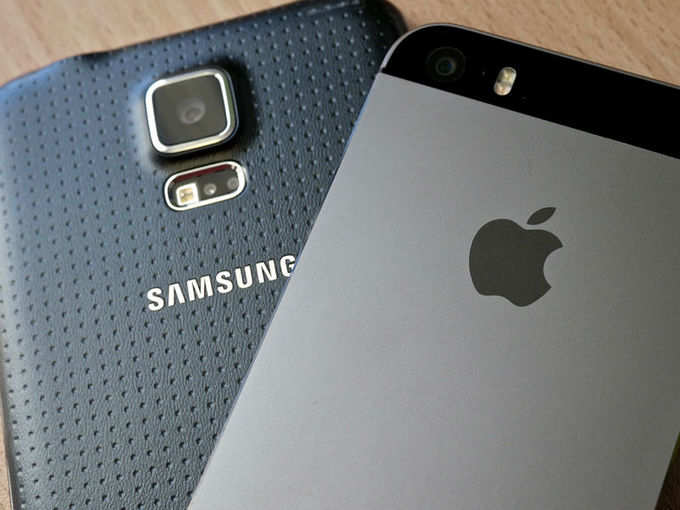 On March 31 year 2011, a $2 billion trial between
On March 31 year 2011, a $2 billion trial between Apple's Claim
On one side is Apple, maker of the iPhone, whose executives believes Samsung owes them several hundred million dollars for copying elements of the iPhones' design and actualizing them in older Samsung phones. including the iPhone's rounded edges, screen and the way in which apps are arranged.
Samsung's Claim
On the other side, Samsung, who has already paid the $548 million fine is fighting to get back $399 million of its money.
The company is not refuting regardless of whether they copied some of Apple's design elements.
Be that as it may, Samsung's fine amounted to the total profit of several of its phones, which the company urges is unfair. Samsung also arguing for a reduction of the fine imposed as the company says it did not do a complete duplication of the iPhone.
The Battle of
Samsung agreed to pay the figure last December, however on the condition it could get money back in the event of a successful challenge or appeal. At that point Samsung appealed to the
Just exactly how that may be separated is a dubious question. Be that as it may, under the current decision, "even if the patented features contributed 1% of the value of Samsung’s phones, Apple gets 100% of Samsung’s profits," Samsung said in its appeal to the high court.
The award of total profits is "a roof on the jury decision, not a story" under current law, and the jury in the case was merely instructed that they had the "alternative to award total profit," according to Apple's documenting.
Decision & Argument
Samsung will argue that customers buy phones for functions more than they do for design. Apple is arguing that, with regards to selling products, design is everything.
The Supreme Court will choose exactly how much an item design is worth. The court will reveal with whom they agree when a decision is handed down in June, 2017.
Whatever the verdict is, it will have an impact on the consumer
Case 1
If the encroaching company pays a licensing fee, it needs to choose either moving the cost to its consumers by expanding the cost of its product, or absorbing the cost itself. In either circumstance, the encroaching party(in this case Samsung) is liable to take a hit on profits, since an increase in prices likely will prompt a decrease in demand, particularly if competitors' prices continue as before.
Case 2
Making a new model of the product which no longer infringes—would have its own particular arrangement of issues. In this manner, if an encroaching company picked this route, it likely would need to revamp its product rapidly and re-launch it in the market, or loose potential customers to competitors. In this circumstance, organizations like Samsung and Apple may wind up with a lower quality product than consumers expect.
As the laws state – If a patent case is filed in US, it’ll remain within the geographical boundaries of the country. But it’ll indirectly impact the consumers all around the world, either in the form of increased cost or lower quality.